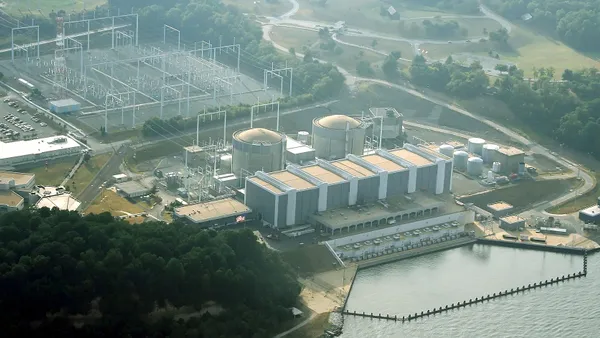Dive Brief:
- The U.S. wind energy industry installed 8,598 MW new generation capacity in 2015, a 77% increase from 2014 and the industry's third biggest year ever, according to a new industry report. Wind was the leading source of new generation last year, installing 41% of new capacity, ahead of solar's 28.5% and the 28.1% contributed by natural gas.
- Power purchase agreements (PPAs) accounted for 59% of the capacity that went online, with 50% of that (4,296 MW) going to utilities and the rest to non-utility off-takers. Xcel Energy was the utility with the most wind on its system, with 6,545 MW, and Berkshire Hathaway Energy owned the most wind, 4,375 MW.
- Austin Energy led public power utilities in wind on its system, at 1,144 MW, and Basin Electric was the top rural electric cooperative, with 811 MW on its system. The U.S. wind industry has attracted $128 billion in project investment over the last 10 years, led by more than $32.7 billion in Texas.
Dive Insight:
At least 62% of all currently installed wind capacity was procured through PPAs with independent power producers (IPPs), according to the American Wind Energy Association's 2015 Annual Market Report, and 15% of wind capacity built since 2009 has been directly owned by utilities.
There has been a shift to a new set of off-takers in recent years. Major brands like Google and Microsoft and other emerging non-utility customers accounted for 52% of the contracted wind in 2015, representing 2,074 MW of new pipeline capacity.
Early wind procurements from private sector, non-profit, and local government off-takers were driven by sustainability and renewable energy goals, but non-utility acquisitions have gained momentum in recent years.
With wind’s installed cost dropping 66% since 2008, deals are now also driven by the pursuit of long-term hedges against fossil fuel price volatility and power cost uncertainties driven by environmental regulations.














